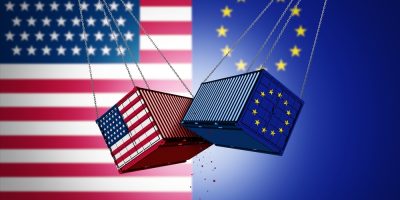-
Frankreich
France: Ambush marketing and the Paris 2024 Olympic Games
4 März 2024
- Vertrieb
- Markenzeichen und Patente
The commercial agent has the right to obtain certain information about the sales of the principal. The Spanish Law on Agency Contracts provides (15.2 LCA) that the agent has the right to demand to see the accounts of the principal in order to verify all matters relating to the commissions due to him. And also, to be provided with the information available to the principal and necessary to verify the amount of such commissions.
This article is in line with the 1986 Commercial Agents Directive, according to which (12.3) the agent is entitled to demand to be provided with all information at the disposal of the principal, particularly an extract from the books of account, which is necessary to verify the amount of commission due to the agent. This may not be altered to the detriment of the commercial agent by agreement.
The question is, does this right remain even after the termination of the agency contract? In other words: once the agency contract is terminated, can the agent request the information and documentation mentioned in these articles and is the Principal obliged to provide it?
In our opinion, the rule does not say anything that limits this right, rather the opposite is to be expected. Therefore, to the extent that there is still any possible commission that may arise from such verification, the answer must be yes. Let us see.
The right to demand the production of accounts exists so that the agent can verify the amount of commissions. And the agent is entitled to commissions for acts and operations concluded during the term of the contract (art. 12 LCA), but also for acts or operations concluded after the termination of the contract (art. 13 LCA), and for operations not carried out due to circumstances attributable to the principal (art. 17 LCA). In addition, the agent is entitled to have the commission accrued at the time when the act or transaction should have been executed (art. 14 LCA).
All these transactions can take place after the conclusion of the contract. Consider the usual situation where orders are placed during the contract but are accepted or executed afterwards. To reduce the agent’s right to be informed only during the term of the contract would be to limit his entitlement to the corresponding commission unduly. And it should be borne in mind that the amount of the commissions during the last five years may also influence the calculation of the client (goodwill) indemnity (art. 28 LCA), so that the agent’s interest in knowing them is twofold: what he would receive as commission, and what could increase the basis for future indemnity.
This has been confirmed, for example, by the Provincial Court (Audiencia Provincial) of Madrid (AAP 227/2017, of 29 June [ECLI:ES:APM:2017:2873A]) which textually states:
[…] art. 15.2 of the Agency Contract Act provides for the right of the agent to demand the exhibition of the Principal’s accounts in the particulars necessary to verify everything relating to the commissions corresponding to him, as well as to be provided with the information available to the Principal and necessary to verify the amount. This does not prevent, […], the agency contract having already been terminated, as this does not imply that commissions would cease to accrue for policies, contracted with the mediation of the agent, which remain in force.
The question then arises as to whether this right to information is unlimited in time. And here the answer would be in the negative. The limitation of the right to receive information would be linked to the statute of limitations of the right to claim the corresponding commission. If the right to receive the commission were undoubtedly time-barred, it could be argued that it would not be possible to receive information about it. But for such an exception, the statute of limitations must be clear, therefore, taking into account possible interruptions due to claims, even extrajudicial ones. In case of doubt, it will be necessary to recognise the right to demand the information, without prejudice to later invoking and recognising the impossibility of claiming the commission if the right is time-barred. And for this we must consider the limitation period for claiming commissions (in general, three years) and that of the right to claim compensation for clientele (one year).
In short: it does not seem that the right to receive information and to examine the principal’s documentation is limited by the term of the agency contract; although, on the other hand, it would be appropriate to analyse the possible limitation period for claiming commissions. In the absence of a clear answer to this question, the right to information should, in our opinion, prevail, without prejudice to the fact that the result may not entitle the claim because it is time-barred.
SUMMARY: In large-scale events such as the Paris Olympics certain companies will attempt to „wildly“ associate their brand with the event through a practice called „ambush marketing“, defined by caselaw as „an advertising strategy implemented by a company in order to associate its commercial image with that of an event, and thus to benefit from the media impact of said event, without paying the related rights and without first obtaining the event organizer’s authorization“ (Paris Court of Appeal, June 8, 2018, Case No 17/12912). A risky and punishable practice, that might sometimes yet be an option yet.
Key takeaways
- Ambush marketing might be a punished practice but is not prohibited as such;
- As a counterpart of their investment, sponsors and official partners benefit from an extensive legal protection against all forms of ambush marketing in the event concerned, through various general texts (counterfeiting, parasitism, intellectual property) or more specific ones (e.g. sport law);
- The Olympics Games are subject to specific regulations that further strengthen this protection, particularly in terms of intellectual property.
- But these rights are not absolute, and they are still thin opportunities for astute ambush marketing.
The protection offered to sponsors and official partners of sporting and cultural events from ambush marketing
With a budget of over 4 billion euros, the 2024 Olympic and Paralympic Games are financed mostly by various official partners and sponsors, who in return benefit from a right to use Olympic and Paralympic properties to be able to associate their own brand image and distinctive signs with these events.
Ambush marketing is not punishable as such under French law, but several scattered texts provide extensive protection against ambush marketing for sponsors and partners of sporting or cultural continental-wide or world-wide events. Indeed, sponsors are legitimately entitled to peacefully enjoy the rights offered to them in return for large-scale investments in events such as the FIFA or rugby World Cups, or the Olympic Games.
In particular, official sponsors and organizers of such events may invoke:
- the „classic“ protections offered by intellectual property law (trademark law and copyright) in the context of infringement actions based on the French Intellectual Property Code,
- tort law (parasitism and unfair competition based on article 1240 of the French Civil Code);
- consumer law (misleading commercial practices) based on the French Consumer Code,
- but also more specific texts such as the protection of the exploitation rights of sports federations and sports event organizers derived from the events or competitions they organize, as set out in article L.333-1 of the French Sports Code, which gives sports event organizers an exploitation monopoly.
The following ambush marketing practices were sanctioned on the abovementioned grounds:
- The use of a tennis competition name and of the trademark associated with it during the sporting event: The organization of online bets, by an online betting operator, on the Roland Garros tournament, using the protected sign and trademark Roland Garros to target the matches on which the bets were organized. The unlawful exploitation of the sporting event, was punished and 400 K€ were allowed as damages, based on article L. 333-1 of the French Sports Code, since only the French Tennis Federation (F.F.T.) owns the right to exploit Roland Garros. The use of the trademark was also punished as counterfeiting (with 300 K€ damages) and parasitism (with 500 K€ damages) (Paris Court of Appeal, Oct. 14, 2009, Case No 08/19179);
- An advertising campaign taking place during a film festival and reproducing the event’s trademark: The organization, during the Cannes Film Festival, of a digital advertising campaign by a cosmetics brand through the publication on its social networks of videos showing the beauty makeovers of the brand’s muses, in some of which the official poster of the Cannes Film Festival was visible, one of which reproduced the registered trademark of the “Palme d’Or”, was punished on the grounds of copyright infringement and parasitism with a 50 K€ indemnity (Paris Judicial Court, Dec. 11, 2020, Case No19/08543);
- An advertising campaign aimed at falsely claiming to be an official partner of an event: The use, during the Cannes Film Festival, of the slogan „official hairdresser for women“ together with the expressions „Cannes“ and „Cannes Festival“, and other publications falsely leading the public to believe that the hairdresser was an official partner, to the detriment of the only official hairdresser of the Cannes festival, was punished on the grounds of unfair competition and parasitism with a 50 K€ indemnity (Paris Court of Appeal, June 8, 2018, Case No 17/12912).
These financial penalties may be combined with injunctions to cease these behaviors, and/or publication in the press under penalty.
An even greater protection for the Paris 2024 Olympic Games
The Paris 2024 Olympic Games are also subject to specific regulations.
Firstly, Article L.141-5 of the French Sports Code, enacted for the benefit of the „Comité national olympique et sportif français” (CNOSF) and the “Comité de l’organisation des Jeux Olympiques et Paralympiques de Paris 2024” (COJOP), protects Olympic signs such as the national Olympic emblems, but also the emblems, the flag, motto and Olympic symbol, Olympic anthem, logo, mascot, slogan and posters of the Olympic Games, the year of the Olympic Games „city + year“, the terms „Jeux Olympiques“, „Olympisme“, „Olympiade“, „JO“, „olympique“, „olympien“ and „olympienne“. Under no circumstances may these signs be reproduced or even imitated by third-party companies. The COJOP has also published a guide to the protection of the Olympic trademark, outlining the protected symbols, trademarks and signs, as well as the protection of the official partners of the Olympic Games.
Secondly, Law no. 2018-202 of March 26, 2018 on the organization of the 2024 Olympic and Paralympic Games adds even more specific prohibitions, such as the reservation for official sponsors of advertising space located near Olympic venues, or located on the Olympic and Paralympic torch route. This protection is unique in the context of the Olympic Games, but usually unregulated in the context of simple sporting events.
The following practices, for example, have already been sanctioned on the above-mentioned grounds:
- Reproduction of a logo imitating the well-known „Olympic“ trademark on a clothing collection: The marketing of a collection of clothing, during the 2016 Olympic Games, bearing a logo (five hearts in the colors of the 5 Olympic colors intersecting in the image of the Olympic logo) imitating the Olympic symbol in association with the words „RIO“ and „RIO 2016“, was punished on the grounds of parasitism (10 K€ damages) and articles L. 141-5 of the French Sports Code (35 K€) and L. 713-1 of the French Intellectual Property Code (10 K€ damages) (Paris Judicial Court, June 7, 2018, Case No16/10605);
- The organization of a contest on social networks using protected symbols: During the 2018 Olympic Games in PyeongChang, a car rental company organized an online game inviting Internet users to nominate the athletes they wanted to win a clock radio, associated with the hashtags „#JO2018“ („#OJ2018”), „#Jeuxolympiques“ (“#Olympicsgame”) or „C’est parti pour les jeux Olympiques“ (“let’s go for the Olympic Games”) without authorization from the CNOSF, owner of these distinctive signs under the 2018 law and article L.141-5 of the French Sport Code and punished on these grounds with 20 K€ damages and of 10 K€ damages for parasitism (Paris Judicial Court, May 29, 2020, n°18/14115).
These regulations offer official partners greater protection for their investments against ambush marketing practices from non-official sponsors.
Some marketing operations might be exempted
An analysis of case law and promotional practices nonetheless reveals the contours of certain advertising practices that could be authorized (i.e. not sanctioned by the above-mentioned texts), provided they are skillfully prepared and presented. Here are a few exemples :
- Communication in an offbeat or humorous tone: An offbeat or even humorous approach can help to avoid the above-mentioned sanctions:
In 2016, for example, the Intersnack group’s Vico potato chips brand launched a promotional campaign around the slogan „Vico, partner of home fans“ in the run-up to the Euro and Olympic Games.
Irish online betting company Paddy Power had sponsored a simple egg-in-the-spoon race in „London“ (… a village in Burgundy, France), to display in London during the 2012 Olympics the slogan „Official Sponsor of the largest athletics event in London this year! There you go, we said it. (Ahem, London France that is)„. At the time, the Olympic Games organizing committee failed to stop the promotional poster campaign.
During Euro 2016, for which Carlsberg was the official sponsor, the Dutch group Heineken marketed a range of beer bottles in the colors of the flags of 21 countries that had „marked its history“, the majority of which were however participating in the competition.
- Communication of information for advertising purposes: The use of the results of a rugby match and the announcement of a forthcoming match in a newspaper to promote a motor vehicle and its distinctive features was deemed lawful: „France 13 Angleterre 24 – the Fiat 500 congratulates England on its victory and looks forward to seeing the French team on March 9 for France-Italy“ (France 13 Angleterre 24 – la Fiat 500 félicite l’Angleterre pour sa victoire et donne rendez-vous à l’équipe de France le 9 mars pour France-Italie) the judges having considered that this publication „merely reproduces a current sporting result, acquired and made public on the front page of the sports newspaper, and refers to a future match also known as already announced by the newspaper in a news article“ (Court of cassation, May 20, 2014, Case No 13-12.102).
- Sponsorship of athletes, including those taking part in Olympic competitions: Subject to compliance with the applicable regulatory framework, particularly as regards models, any company may enter into partnerships with athletes taking part in the Olympic Games, for example by donating clothing bearing the desired logo or brand, which they could wear during their participation in the various events. Athletes may also, under certain conditions, broadcast acknowledgements from their partner (even if unofficial). Rule 40 of the Olympic Charter governs the use of athletes‘, coaches‘ and officials‘ images for advertising purposes during the Olympic Games.
The combined legal and marketing approach to the conception and preparation of the message of such a communication operation is essential to avoid legal proceedings, particularly on the grounds of parasitism; one might therefore legitimately contemplate advertising campaigns, particularly clever, or even malicious ones.
In this first episode of Legalmondo’s Distribution Talks series, I spoke with Ignacio Alonso, a Madrid-based lawyer with extensive experience in international commercial distribution.
Main discussion points:
- in Spain, there is no specific law for distribution agreements, which are governed by the general rules of the Commercial Code;
- therefore, it is essential to draft a clear and comprehensive contract, which will be the primary source of the parties‘ rights and obligations;
- it is also good to be aware of Spanish case law on commercial distribution, which in some cases applies the law on commercial agency by analogy.
- the most common issues involving foreign producers distributing in Spain arise at the time of termination of the relationship, mainly because case law grants the terminated distributor an indemnity of clientele or goodwill if similar prerequisites to those in the agency regulations apply.
- another frequent dispute concerns the adequacy of the notice period for terminating the contract, especially if there is no agreement between the parties: the advice is to follow what the agency regulations stipulate and thus establish a minimum notice period of one month for each year of the contract’s duration, up to 6 months for agreements lasting more than five years;
- regarding dispute resolution tools, mediation is an option that should be carefully considered because it is quick, inexpensive, and allows a shared solution to be sought flexibly without disrupting the business relationship.
- if mediation fails, the parties can provide for recourse to arbitration or state court. The choice depends on the case’s specific circumstances, and one factor in favor of jurisdiction is the possibility of appeal, which is excluded in the case of arbitration.
Go deeper
- Goodwill or clientele indemnity, when it is due and how to calculate it: see this article and on our blog;
- Practical Guide on International Distribution Contract: Spain report
- Practical Guide on International Agency Contract: Spain report
- Mediation: The importance of mediation in distribution contracts
- How to negotiate and draft an international distribution agreement: 7 lessons from the history of Nike
Summary
On 1 June 2022, Regulation EU n. 720/2022, i.e.: the new Vertical Block Exemption Regulation (hereinafter: „VBER“), replaced the previous version (Regulation EU n. 330/2010), expired on 31 May 2022.
The new VBER and the new vertical guidelines (hereinafter: “Guidelines”) have received the main evidence gathered during the lifetime of the previous VBER and contain some relevant provisions affecting the discipline of all B2B agreements among businesses operating at different levels of the supply chain.
In this article, we will focus on the impact of the new VBER on sales through digital platforms, listing the main novelties impacting distribution chains, including a platform for marketing products/services.
The general discipline of vertical agreements
Article 101(1) of the Treaty on the Functioning of the European Union (“TFEU”) prohibits all agreements that prevent, restrict, or distort competition within the EU market, listing the main types, e.g.: price fixing; market partitioning; limitations on production/development/investment; unfair terms, etc.
However, Article 101(3) TFEU exempts from such restrictions the agreements that contribute to improving the EU market, to be identified in a special category Regulation.
The VBER establishes the category of vertical agreements (i.e., agreements between businesses operating at different levels of the supply chain), determining which of these agreements are exempted from Article 101(1) TFEU prohibition.
In short, vertical agreements are presumed to be exempted (and therefore valid) if they do not contain so-called „hardcore restrictions“ (i.e., severe restrictions of competition, such as an absolute ban on sales in a territory or the manufacturer’s determination of the distributor’s resale price) and if neither party’s market share exceeds 30%.
The exempted agreements benefit from what has been termed the “safe harbour” of the VBER. In contrast, the others will be subject to the general prohibition of Article 101(1) TFEU unless they can benefit from an individual exemption under Article 101(3) TFUE.
The innovations introduced by the new VBER to online platforms
The first relevant aspect concerns the classification of the platforms, as the European Commission excluded that the online platform generally meets the conditions to be categorized as agency agreements.
While there have never been doubts concerning platforms that operate by purchasing and reselling products (classic example: Amazon Retail), some have arisen concerning those platforms that merely promote the products of third parties without carrying out the activity of resale (classic example: Amazon Marketplace).
With this statement, the European Commission wanted to clear the field of doubt, making explicit that intermediation service providers (such as online platforms) qualify as suppliers (as opposed to commercial agents) under the VBER. This reflects the approach of Regulation (EU) 2019/1150 („P2B Regulation“), which has, for the first time, dictated a specific discipline for digital platforms. It provided for a set of rules to create a “fair, transparent, and predictable environment” for smaller businesses and customers” and for the rationale of the Digital Markets Act, banning certain practices used by large platforms acting as “gatekeepers”.
Therefore, all contracts concluded between manufacturers and platforms (defined as ‚providers of online intermediation services‘) are subject to all the restrictions imposed by the VBER. These include the price, the territories to which or the customers to whom the intermediated goods or services may be sold, or the restrictions relating to online advertising and selling.
Thus, to give an example, the operator of a platform may not impose a fixed or minimum sale price for a transaction promoted through the platform.
The second most impactful aspect concerns hybrid platforms, i.e., competing in the relevant market to sell intermediated goods or services. Amazon is the most well-known example, as it is a provider of intermediation services (“Amazon Marketplace”), and – at the same time – it distributes the products of those parties (“Amazon Retail”). We have previously explored the distinction between those 2 business models (and the consequences in terms of intellectual property infringement) here.
The new VBER explicitly does not apply to hybrid platforms. Therefore, the agreements concluded among such platforms and manufacturers are subject to the limitations of the TFEU, as such providers may have the incentive to favour their sales and the ability to influence the outcome of competition between undertakings that use their online intermediation services.
Those agreements must be assessed individually under Article 101 of the TFEU, as they do not necessarily restrict competition within the meaning of TFEU, or they may fulfil the conditions of an individual exemption under Article 101(3) TFUE.
The third very relevant aspect concerns the parity obligations (also referred to as Most Favoured Nation Clauses, or MFNs), i.e., the contract provisions in which a seller (directly or indirectly) agrees to give the buyer the best terms it makes available to any other buyer.
Indeed, platforms‘ contractual terms often contain parity obligation clauses to prevent users from offering their products/services at lower prices or on better conditions on their websites or other platforms.
The new VBER deals explicitly with parity clauses, making a distinction between clauses whose purpose is to prohibit users of a platform from selling goods or services on more favourable terms through competing platforms (so-called “wide parity clauses”), and clauses that prohibit sales on more favourable terms only in respect of channels operated directly by the users (so-called “narrow parity clauses”).
Wide parity clauses do not benefit from the VBER exemption; therefore, such obligations must be assessed individually under Article 101(3) TFEU.
On the other hand, narrow parity clauses continue to benefit from the exemption already granted by the old VBER if they do not exceed the threshold of 30% of the relevant market share set out in Article 3 of the new VBER. However, the new Guidelines warn against using overly narrow parity obligations by online platforms covering a significant share of users, stating that if there is no evidence of pro-competitive effects, the benefit of the block exemption is likely to be withdrawn.
Impact and takeaways
The new VBER entered into force on 1 June 2022 and is already applicable to agreements signed after that date. Agreements already in force on 31 May 2022 that satisfy the conditions for exemption under the current VBER but do not satisfy the requirements under the new VBER shall benefit from a one-year transitional period.
The new regime will be the playing field for all platform-driven sales over the next 12 years (the regulation expires on 31 May 2034). Currently, the rather restrictive novelties on hybrid platforms and parity obligations will likely necessitate substantial revisions to existing trade agreements.
Here, then, are some tips for managing contracts and relationships with online platforms:
- the new VBER is the right opportunity to review the existing distribution networks. The revision will have to consider not only the new regulatory limits (e.g., the ban on wide parity clauses) but also the new discipline reserved for hybrid platforms and dual distribution to coordinate the different distribution channels as efficiently as possible, by the stakes set by the new VBER and the Guidelines;
- platforms are likely to play an even greater role during the next decade; it is, therefore, essential to consider these sales channels from the outset, coordinating them with the other existing ones (retail, direct sales, distributors, etc.) to avoid jeopardizing the marketing of products or services;
- the European legislator’s attention toward platforms is growing. Looking up from the VBER, one should not forget that they are subject to a multitude of other European regulations, which are gradually regulating the sector and which must be considered when concluding contracts with platforms. The reference is not only to the recent Digital Market Act and P2B Regulation but also to the protection of IP rights on platforms, which – as we have already seen – is still an open issue.
Summary
To avoid disputes with important suppliers, it is advisable to plan purchases over the medium and long term and not operate solely on the basis of orders and order confirmations. Planning makes it possible to agree on the duration of the ’supply agreement, minimum volumes of products to be delivered and delivery schedules, prices, and the conditions under which prices can be varied over time.
The use of a framework purchase agreement can help avoid future uncertainties and allows various options to be used to manage commodity price fluctuations depending on the type of products , such as automatic price indexing or agreement to renegotiate in the event of commodity fluctuations beyond a certain set tolerance period.
I read in a press release: “These days, the glass industry is sending wine companies new unilateral contract amendments with price changes of 20%…”
What can one do to avoid the imposition of price increases by suppliers?
- Know your rights and act in an informed manner
- Plan and organise your supply chain
Does my supplier have the right to increase prices?
If contracts have already been concluded, e.g., orders have already been confirmed by the supplier, the answer is often no.
It is not legitimate to request a price change. It is much less legitimate to communicate it unilaterally, with the threat of cancelling the order or not delivering the goods if the request is not granted.
What if he tells me it is force majeure?
That’s wrong: increased costs are not a force majeure but rather an unforeseen excessive onerousness, which hardly happens.
What if the supplier canceled the order, unilaterally increased the price, or did not deliver the goods?
He would be in breach of contract and liable to pay damages for violating his contractual obligations.
How can one avoid a tug-of-war with suppliers?
The tools are there. You have to know them and use them.
It is necessary to plan purchases in the medium term, agreeing with suppliers on a schedule in which are set out:
- the quantities of products to be ordered
- the delivery terms
- the durationof the agreement
- the pricesof the products or raw materials
- the conditions under which prices can be varied
There is a very effective instrument to do so: a framework purchase agreement.
Using a framework purchase agreement, the parties negotiate the above elements, which will be valid for the agreed period.
Once the agreement is concluded, product orders will follow, governed by the framework agreement, without the need to renegotiate the content of individual deliveries each time.
For an in-depth discussion of this contract, see this article.
- “Yes, but my suppliers will never sign it!”
Why not? Ask them to explain the reason.
This type of agreement is in the interest of both parties. It allows planning future orders and grants certainty as to whether, when, and how much the parties can change the price.
In contrast, acting without written agreements forces the parties to operate in an environment of uncertainty. Suppliers can request price increases from one day to the next and refuse supply if the changes are not accepted.
How are price changes for future supplies regulated?
Depending on the type of products or services and the raw materials or energy relevant in determining the final price, there are several possibilities.
- The first option is to index the price automatically. E.g., if the cost of a barrel of Brent oil increases/decreases by 10%, the party concerned is entitled to request a corresponding adjustment of the product’s price in all orders placed as of the following week.
- An alternative is to provide for a price renegotiation in the event of a fluctuation of the reference commodity. E.g., suppose the LME Aluminium index of the London Stock Exchange increases above a certain threshold. In that case, the interested party may request a price renegotiationfor orders in the period following the increase.
What if the parties do not agree on new prices?
It is possible to terminate the contract or refer the price determination to a third party, who would act as arbitrator and set the new prices for future orders.
Summary
The framework supply contract is an agreement that regulates a series of future sales and purchases between two parties (customer and supplier) that take place over a certain period of time. This agreement determines the main elements of future contracts such as price, product volumes, delivery terms, technical or quality specifications, and the duration of the agreement.
The framework contract is useful for ensuring continuity of supply from one or more suppliers of a certain product that is essential for planning industrial or commercial activity. While the general terms and conditions of purchase or sale are the rules that apply to all suppliers or customers of the company. The framework contract is advisable to be concluded with essential suppliers for the continuity of business activity, in general or in relation to a particular project.
What I am talking about in this article:
- What is the supply framework agreement?
- What is the function of the supply framework agreement?
- The difference with the general conditions of sale or purchase
- When to enter a purchase framework agreement?
- When is it beneficial to conclude a sales framework agreement?
- The content of the supply framework agreement
- Price revision clause and hardship
- Delivery terms in the supply framework agreement
- The Force Majeure clause in international sales contracts
- International sales: applicable law and dispute resolution arrangements
What is a framework supply agreement?
It is an agreement that regulates a series of future sales and purchases between two parties (customer and supplier), which will take place over a certain period.
It is therefore referred to as a „framework agreement“ because it is an agreement that establishes the rules of a future series of sales and purchase contracts, determining their primary elements (such as the price, the volumes of products to be sold and purchased, the delivery terms of the products, and the duration of the contract).
After concluding the framework agreement, the parties will exchange orders and order confirmations, entering a series of autonomous sales contracts without re-discussing the covenants already defined in the framework agreement.
Depending on one’s point of view, this agreement is also called a sales framework agreement (if the seller/supplier uses it) or a purchasing framework agreement (if the customer proposes it).
What is the function of the framework supply agreement?
It is helpful to arrange a framework agreement in all cases where the parties intend to proceed with a series of purchases/sales of products over time and are interested in giving stability to the commercial agreement by determining its main elements.
In particular, the purchase framework agreement may be helpful to a company that wishes to ensure continuity of supply from one or more suppliers of a specific product that is essential for planning its industrial or commercial activity (raw material, semi-finished product, component).
By concluding the framework agreement, the company can obtain, for example, a commitment from the supplier to supply a particular minimum volume of products, at a specific price, with agreed terms and technical specifications, for a certain period.
This agreement is also beneficial, at the same time, to the seller/supplier, which can plan sales for that period and organize, in turn, the supply chain that enables it to procure the raw materials and components necessary to produce the products.
What is the difference between a purchase or sales framework agreement and the general terms and conditions?
Whereas the framework agreement is an agreement that is used with one or more suppliers for a specific product and a certain time frame, determining the essential elements of future contracts, the general purchase (or sales) conditions are the rules that apply to all the company’s suppliers (or customers).
The first agreement, therefore, is negotiated and defined on a case-by-case basis. At the same time, the general conditions are prepared unilaterally by the company, and the customers or suppliers (depending on whether they are sales or purchase conditions) adhere to and accept that the general conditions apply to the individual order and/or future contracts.
The two agreements might also co-exist: in that case; it is a good idea to specify which contract should prevail in the event of a discrepancy between the different provisions (usually, this hierarchy is envisaged, ranging from the special to the general: order – order confirmation; framework agreement; general terms and conditions of purchase).
When is it important to conclude a purchase framework agreement?
It is beneficial to conclude this agreement when dealing with a mono-supplier or a supplier that would be very difficult to replace if it stopped selling products to the purchasing company.
The risks one aims to avoid or diminish are so-called stock-outs, i.e., supply interruptions due to the supplier’s lack of availability of products or because the products are available, but the parties cannot agree on the delivery time or sales price.
Another result that can be achieved is to bind a strategic supplier for a certain period by agreeing that it will reserve an agreed share of production for the buyer on predetermined terms and conditions and avoid competition with offers from third parties interested in the products for the duration of the agreement.
When is it helpful to conclude a sales framework agreement?
This agreement allows the seller/supplier to plan sales to a particular customer and thus to plan and organize its production and logistical capacity for the agreed period, avoiding extra costs or delays.
Planning sales also makes it possible to correctly manage financial obligations and cash flows with a medium-term vision, harmonizing commitments and investments with the sales to one’s customers.
What is the content of the supply framework agreement?
There is no standard model of this agreement, which originated from business practice to meet the requirements indicated above.
Generally, the agreement provides for a fixed period (e.g., 12 months) in which the parties undertake to conclude a series of purchases and sales of products, determining the price and terms of supply and the main covenants of future sales contracts.
The most important clauses are:
- the identification of products and technical specifications (often identified in an annex)
- the minimum/maximum volume of supplies
- the possible obligation to purchase/sell a minimum/maximum volume of products
- the schedule of supplies
- the delivery times
- the determination of the price and the conditions for its possible modification (see also the next paragraph)
- impediments to performance (Force Majeure)
- cases of Hardship
- penalties for delay or non-performance or for failure to achieve the agreed volumes
- the hierarchy between the framework agreement and the orders and any other contracts between the parties
- applicable law and dispute resolution (especially in international agreements)
How to handle price revision in a supply contract?
A crucial clause, especially in times of strong fluctuations in the prices of raw materials, transport, and energy, is the price revision clause.
In the absence of an agreement on this issue, the parties bear the risk of a price increase by undertaking to respect the conditions initially agreed upon; except in exceptional cases (where the fluctuation is strong, affects a short period, and is caused by unforeseeable events), it isn’t straightforward to invoke the supervening excessive onerousness, which allows renegotiating the price, or the contract to be terminated.
To avoid the uncertainty generated by price fluctuations, it is advisable to agree in the contract on the mechanisms for revising the price (e.g., automatic indexing following the quotation of raw materials). The so-called Hardship or Excessive Onerousness clause establishes what price fluctuation limits are accepted by the parties and what happens if the variations go beyond these limits, providing for the obligation to renegotiate the price or the termination of the contract if no agreement is reached within a certain period.
How to manage delivery terms in a supply agreement?
Another fundamental pact in a medium to long-term supply relationship concerns delivery terms. In this case, it is necessary to reconcile the purchaser’s interest in respecting the agreed dates with the supplier’s interest in avoiding claims for damages in the event of a delay, especially in the case of sales requiring intercontinental transport.
The first thing to be clarified in this regard concerns the nature of delivery deadlines: are they essential or indicative? In the first case, the party affected has the right to terminate (i.e., wind up) the agreement in the event of non-compliance with the term; in the second case, due diligence, information, and timely notification of delays may be required, whereas termination is not a remedy that may be automatically invoked in the event of a delay.
A useful instrument in this regard is the penalty clause: with this covenant, it is established that for each day/week/month of delay, a sum of money is due by way of damages in favor of the party harmed by the delay.
If quantified correctly and not excessively, the penalty is helpful for both parties because it makes it possible to predict the damages that may be claimed for the delay, quantifying them in a fair and determined sum. Consequently, the seller is not exposed to claims for damages related to factors beyond his control. At the same time, the buyer can easily calculate the compensation for the delay without the need for further proof.
The same mechanism, among other things, may be adopted to govern the buyer’s delay in accepting delivery of the goods.
Finally, it is a good idea to specify the limit of the penalty (e.g.,10 percent of the price of the goods) and a maximum period of grace for the delay, beyond which the party concerned is entitled to terminate the contract by retaining the penalty.
The Force Majeure clause in international sales contracts
A situation that is often confused with excessive onerousness, but is, in fact, quite different, is that of Force Majeure, i.e., the supervening impossibility of performance of the contractual obligation due to any event beyond the reasonable control of the party affected, which could not have been reasonably foreseen and the effects of which cannot be overcome by reasonable efforts.
The function of this clause is to set forth clearly when the parties consider that Force Majeure may be invoked, what specific events are included (e.g., a lock-down of the production plant by order of the authority), and what are the consequences for the parties‘ obligations (e.g., suspension of the obligation for a certain period, as long as the cause of impossibility of performance lasts, after which the party affected by performance may declare its intention to dissolve the contract).
If the wording of this clause is general (as is often the case), the risk is that it will be of little use; it is also advisable to check that the regulation of force majeure complies with the law applicable to the contract (here an in-depth analysis indicating the regime provided for by 42 national laws).
Applicable law and dispute resolution clauses
Suppose the customer or supplier is based abroad. In that case, several significant differences must be borne in mind: the first is the agreement’s language, which must be intelligible to the foreign party, therefore usually in English or another language familiar to the parties, possibly also in two languages with parallel text.
The second issue concerns the applicable law, which should be expressly indicated in the agreement. This subject matter is vast, and here we can say that the decision on the applicable law must be made on a case-by-case basis, intentionally: in fact, it is not always convenient to recall the application of the law of one’s own country.
In most international sales contracts, the 1980 Vienna Convention on the International Sale of Goods („CISG“) applies, a uniform law that is balanced, clear, and easy to understand. Therefore, it is not advisable to exclude it.
Finally, in a supply framework agreement with an international supplier, it is important to identify the method of dispute resolution: no solution fits all. Choosing a country’s jurisdiction is not always the right decision (indeed, it can often prove counterproductive).
Nach mehr als 30 Jahren Verhandlungen blickt die Welt nun auf das erste panafrikanische Handelsabkommen, welches 2019 in Kraft getreten ist: Die Afrikanische Kontinentale Freihandelszone (African Continental Free Trade Area – AfCFTA).
Afrika ist mit seinen 55 Ländern und rund 1,3 Milliarden Einwohnern nach Asien der zweitgrößte Kontinent der Welt. Das Potenzial des Kontinents ist enorm: Mehr als 50 % der afrikanischen Bevölkerung ist unter 20 Jahre alt, und die Bevölkerung wächst weltweit am schnellsten. Bis 2050 wird voraussichtlich jedes vierte Neugeborene aus Afrika stammen. Darüber hinaus ist der Kontinent reich an fruchtbaren Böden und Rohstoffen.
Für westliche Investoren hat Afrika in den letzten Jahren erheblich an Bedeutung gewonnen. So ist ein beachtliches internationales Handelsvolumen entstanden, das nicht zuletzt durch die 2017 von den G20-Staaten verabschiedete Initiative „Compact with Africa“, auch bekannt als „Marshallplan mit Afrika“, gefördert wird. Der Fokus liegt auf dem Ausbau der wirtschaftlichen Zusammenarbeit Afrikas mit den G20-Ländern durch die Stärkung privater Investitionen.
Zugleich stagnierte bislang jedoch der innerafrikanische Handel: Teilweise noch bestehende hohe innerafrikanische Zölle, nichttarifäre Handelshemmnisse (non-tariff barriers – NTBs), schwache Infrastruktur, Korruption, schwerfällige Bürokratie sowie intransparente und inkonsistente Regulierungen sorgten dafür, dass sich die interregionalen Exporte kaum entwickeln konnten und zuletzt nur 17 % des innerafrikanischen Handels und nur 0,36 % des Welthandels ausmachten. Schon lange hatte sich deshalb die Afrikanische Union (AU) die Schaffung einer gemeinsamen Handelszone auf ihre Agenda gesetzt.
Was verbirgt sich hinter AfCFTA?
Der Errichtung einer panafrikanischen Handelszone gingen jahrzehntelange Verhandlungen voraus, welche schließlich in das Inkrafttreten des AfCFTA am 30. Mai 2019 mündeten.
Das AfCFTA ist eine von ihren Mitgliedern errichtete Freihandelszone, die (mit Ausnahme Eritreas) den gesamten afrikanischen Kontinent umfasst und damit, gemessen an der Zahl der Mitgliedsstaaten nach der Welthandelsorganisation (World Trade Organization – WTO) die größte Freihandelszone der Welt ist.
Die Ausgestaltung des gemeinsamen Marktes war Gegenstand mehrerer Einzelverhandlungen, die in den Phasen I und II geführt wurden.
Phase I umfasst die Verhandlungen zu drei Protokollen und ist nahezu abgeschlossen.
Das Protokoll über den Handel mit Waren
Dieses Protokoll sieht die Abschaffung von 90 % aller innerafrikanischen Zölle in allen Warenkategorien innerhalb von fünf Jahren nach Inkrafttreten vor. Davon können bis zu 7 % der Waren als sensible Waren eingestuft werden, für die ein Zeitraum von zehn Jahren für die Beseitigung der Zölle gilt. Für die am wenigsten entwickelten Länder (Least Developed Countries – LDCs) wird die Vorbereitungszeit von fünf auf zehn Jahre und für sensible Waren von zehn auf dreizehn Jahre verlängert, sofern sie ihren Bedarf nachweisen. Die restlichen 3 % der Zölle sind vollständig vom Zollabbau ausgenommen.
Voraussetzung für den Zollabbau ist die klare Abgrenzung der Ursprungsregeln. Andernfalls könnten Einfuhren aus Drittländern von den ausgehandelten Zollvorteilen profitieren. Über die meisten Ursprungsregeln ist bereits eine Einigung erzielt worden.
Das Protokoll über den Handel mit Dienstleistungen
Die AU-Generalversammlung hat sich bisher auf fünf Schwerpunktbereiche (Verkehr, Kommunikation, Tourismus, Finanz- und Unternehmensdienstleistungen) und Leitlinien für die entsprechenden Verpflichtungen geeinigt. 47 AU-Mitgliedsstaaten haben bereits ihre Angebote für spezifische Verpflichtungen vorgelegt und die Überprüfung von 28 von ihnen ist abgeschlossen. Darüber hinaus sind die Verhandlungen, beispielsweise über die Anerkennung von Berufsqualifikationen, noch nicht abgeschlossen.
Das Protokoll über die Streitbeilegung
Mit dem Protokoll über Regeln und Verfahren für die Streitbeilegung schafft das AfCFTA ein Streitbeilegungssystem nach dem Vorbild der WTO-Streitbeilegungsvereinbarung. Das Streitbeilegungsgremium (Dispute Settlement Body – DSB) verwaltet das AfCFTA-Streitbeilegungsprotokoll und setzt ein Schiedsgericht (Adjudicating Panel – Panel) und ein Berufungsgremium (Appellate Body – AB) ein. Das DSB setzt sich aus einem Vertreter jedes Mitgliedstaates zusammen und wird tätig, sobald es zwischen den Vertragsstaaten Meinungsverschiedenheiten über die Auslegung und/oder Anwendung des Abkommens in Bezug auf ihre Rechte und Pflichten gibt.
Für die verbleibende Phase II sind Verhandlungen über Investitions- und Wettbewerbspolitik, Fragen des geistigen Eigentums, Online-Handel sowie Frauen und Jugend im Handel geplant, deren Ergebnisse in weitere Protokolle einfließen werden.
Die Umsetzung des AfCFTA
Grundsätzlich kann der Handel im Rahmen eines Handelsabkommens erst dann beginnen, wenn der rechtliche Rahmen endgültig steht. Die Staats- und Regierungschefs der AU haben jedoch im Dezember 2020 vereinbart, dass der Handel mit solchen Waren, für die die Verhandlungen abgeschlossen sind, beginnen kann. Im Rahmen dieser Übergangsregelung fand nach einer pandemiebedingten Verschiebung am 4. Januar 2021 die erste AfCFTA-Handelsabwicklung von Ghana nach Südafrika statt.
Bausteine der AfCFTA
Alle 55 Mitglieder der AU waren an den AfCFTA-Verhandlungen beteiligt. Davon gehören 47 zu mindestens einer der anerkannten Regionalen Wirtschaftsgemeinschaften (Regional Economic Communities – RECs), die gemäß der Präambel des AfCFTA-Abkommens weiterhin als Bausteine des Handelsabkommens dienen sollen. Folglich waren es die RECs, welche bei den AfCFTA-Verhandlungen für ihre jeweiligen Mitglieder auftraten. Das AfCFTA-Abkommen sieht vor, dass die RECs ihre Rechtsinstrumente, Institutionen und Streitbeilegungsmechanismen beibehalten.
Innerhalb der AU gibt es acht anerkannte regionale Wirtschaftsgemeinschaften, die sich in einigen Ländern überschneiden und bei denen es sich entweder um präferenzielle Handelsabkommen (Freihandelsabkommen) oder Zollunionen handelt.
Im Rahmen der AfCFTA haben die RECs verschiedene Aufgaben. Diese sind insbesondere:
- Koordinierung der Verhandlungspositionen und Unterstützung der Mitgliedsstaaten bei der Umsetzung des Abkommens
- Lösungsorientierte Mediation bei Unstimmigkeiten zwischen den Mitgliedsstaaten
- Unterstützung der Mitgliedsstaaten bei der Harmonisierung von Zöllen und anderen Grenzschutzbestimmungen
- Förderung der Nutzung des AfCFTA-Meldeverfahrens zum Abbau von NTBs
Ausblick auf das AfCFTA
Das AfCFTA hat das Potenzial, die Integration Afrikas in die Weltwirtschaft zu erleichtern und schafft die reale Möglichkeit einer Neuausrichtung der internationalen Integrations- und Kooperationsmuster.
Ein Handelsabkommen allein ist noch keine Garantie für wirtschaftlichen Erfolg. Damit das Abkommen den prognostizierten Durchbruch erzielt, müssen die Mitgliedstaaten den politischen Willen haben, die neuen Regeln konsequent umzusetzen und die dafür notwendigen Kapazitäten zu schaffen. Insbesondere die kurzfristige Beseitigung von Handelshemmnissen und die Schaffung einer nachhaltigen physischen und digitalen Infrastruktur dürften entscheidend sein.
Wenn Sie sich für das AfCFTA interessieren, können Sie hier eine erweiterte Version dieses Artikels lesen.
Der Legalmondo African Desk
Mit unseren Experten in Ägypten, Marokko, Algerien, Tunesien, Libyen, Sudan, Kamerun, Côte d’Ivoire, Ghana, Senegal und Malawi unterstützen wir Unternehmen bei Investitionen und Geschäftsvorhaben in Afrika.
Ausländische Unternehmen in afrikanischen Ländern, in denen wir nicht direkt mit einem Büro vertreten sind, können wir auch über unser Netzwerk von lokalen Partnern unterstützen.
Wie es funktioniert
- Wir vereinbaren ein Treffen (persönlich oder online) mit einem unserer Experten, um die Bedürfnisse des Mandanten zu verstehen.
- Sobald wir die Zusammenarbeit aufgenommen haben, begleiten wir den Mandanten mit einem Rechtsanwalt bei all seinen rechtlichen Angelegenheiten (einzelne Fälle oder laufende rechtliche Unterstützung)
Nehmen Sie Kontakt auf, um mehr zu erfahren.
Laut der EU-Untersuchung des E-Commerce-Sektors liefern über 50 % der Internet-Marktplätze und 36 % der Einzelhändler Daten an Preissuchmaschinen wie Idealo, Google Shopping oder Shopzilla. Demgegenüber unterliegen rund 10 % der Händler einem Verbot von Preisvergleichsmaschinen (siehe Arbeitsdokument der Kommissionsdienststellen SWD(2017) 154 final, S. 32 Abbildung B. 4 und S. 37 Europäische Kommission, Final report on the E-commerce Sector Inquiry, S. 10).
Allerdings hat der Bundesgerichtshof kürzlich ein Verbot von Preisvergleichsmaschinen als wettbewerbswidrig und nichtig bestätigt. Im konkreten Fall hatte Asics Einzelhändlern in Deutschland generell untersagt, Preissuchmaschinen im Online-Vertrieb zu unterstützen:
„Darüber hinaus darf der Vertragshändler nicht … die Funktionalität von Preisvergleichsmaschinen unterstützen, indem er anwendungsspezifische Schnittstellen („APIs“) für diese Preisvergleichsmaschinen bereitstellt.“
Darüber hinaus enthielt die Vereinbarung ein umfassendes Verbot der Werbung auf Plattformen Dritter: Asics untersagte seinen Vertragshändlern, Dritten zu gestatten, die Marken von Asics in irgendeiner Form auf der Website des Dritten zu verwenden, um Kunden auf die Website des Asics-Vertragshändlers zu leiten.
Die Vertriebsvereinbarung von Asics wurde vom Bundeskartellamt zunächst als Pilotverfahren untersucht (ein weiteres Pilotverfahren wurde gegen Adidas eingeleitet, weil sich viele Sporthändler über die Internet-Weiterverkaufsbeschränkungen der Sportartikelhersteller beschwerten). Im Jahr 2015 entschied das Bundeskartellamt, dass das Verbot von Preisvergleichsmaschinen durch Asics kartellrechtswidrig sei, da es gegen Art. 101 Abs. 1 AEUV, § 1 Gesetz gegen Wettbewerbsbeschränkungen (GWB) verstoße.. Begründet wurde dies damit, dass ein solches Verbot in erster Linie darauf abziele, den Preiswettbewerb auf Kosten der Verbraucher zu kontrollieren und einzuschränken. Diese Entscheidung wurde zunächst vom Oberlandesgericht Düsseldorf bestätigt (Beschluss vom 5. April 2017, Az. VI-Kart 13/15 (V), siehe den Legalmondo-Artikel hier).
Nun wurde die Entscheidung vom Bundesgerichtshof bestätigt (Beschluss vom 12. Dezember 2017, Az. KVZ 41/17). Das Asics-Urteil ist besonders bemerkenswert, weil es das erste deutsche Gerichtsurteil nach dem Coty-Urteil des Gerichtshofs der Europäischen Union zu Plattformverboten ist (siehe den Legalmondo-Artikel hier). Es ist daher ein erster Hinweis darauf, wie die Gerichte in Zukunft mit Wiederverkaufsbeschränkungen im Internet umgehen werden.
So stellt der BGH fest, dass das generelle Verbot von Preissuchmaschinen „zumindest“ den passiven Verkauf an Endverbraucher einschränke (Rn. 23, 25) – eine solche Einschränkung sei sogar der beabsichtigte Zweck eines solchen Verbots. Die Zulässigkeit allgemeiner Plattformverbote nach dem Coty-Urteil (siehe hier) impliziere nicht die Zulässigkeit allgemeiner Preisvergleichsverbote (Rn. 28 ff.), so das Gericht. Insbesondere die „Kombination von Beschränkungen“ – d.h. Verbot von Preisvergleichsmaschinen und Werbung auf Drittplattformen – würde den Unterschied ausmachen. Denn sie gewährleiste nicht, dass Interessenten einen „praktisch substanziellen Zugang“ zur Händler-Website erhielten (Rz. 30) – wobei der BGH offen lässt, was für einen solchen „substanziellen Zugang“ ausreicht oder erforderlich ist; in diesem Fall könnten allgemeine Preisvergleichsmaschinenverbote weiterhin zulässig sein.
Praktische Tipps:
- Auf EU-Ebene haben weder der Gerichtshof noch die Europäische Kommission zur Gültigkeit von generellen Verboten von Preisvergleichsmaschinen Stellung genommen. Im Vereinigten Königreich hingegen sieht die Competition and Markets Authority die Verbote von Preissuchmaschinen ähnlich kritisch („BMW changes policy on car comparison sites following CMA action„) wie die deutsche Verwaltungspraxis und Rechtsprechung.
- In der Praxis dürfte damit nach Ansicht des Bundesgerichtshofs die folgende Differenzierung gelten, die bereits das Oberlandesgericht Düsseldorf (Asics) und das Oberlandesgericht Frankfurt (Deuter) angedeutet haben:
- Generelle Verbote von Preisvergleichsmaschinen sind – so der Bundesgerichtshof – wettbewerbswidrig und daher grundsätzlich nichtig – sie können aber dennoch zulässig sein, wenn sie nicht mit einem weitreichenden Werbeverbot verbunden sind, so dass Interessenten der Zugang zur Händler-Website gewährleistet ist.
- Einzelne Preisvergleichsmaschinenverbote und andere mildere Beschränkungen / Kriterien für die Nutzung von Preisvergleichsportalen sind zulässig, etwa hinsichtlich der Produktabbildungen oder -beschreibungen und des Produktumfelds (etwa die Vorgabe, dass Händler nur neue Produkte anbieten dürfen).
Weitere Einzelheiten: Rohrßen, Internetvertrieb: „Nicht Ideal(o)“ – Kombination aus Preissuchmaschinen-Verbot und Logo-Klausel, in: ZVertriebsR 2018, 118 ff.
- Darüber hinaus können Hersteller – innerhalb eines Alleinvertriebsnetzes – ihren Händlern aktive Online-Werbung gegenüber Kunden, die dem Hersteller vorbehalten sind oder die der Hersteller einem anderen Händler zugewiesen hat, untersagen und die jeweils zu verwendenden Sprachen festlegen. Grundsätzlich sind auch alle anderen denkbaren Qualitätskriterien zulässig, sofern sie den Kriterien für den Offline-Vertrieb gleichwertig sind (denn „die Kommission betrachtet alle Verpflichtungen, die Vertragshändler davon abhalten, das Internet zu nutzen, um eine größere Anzahl und Vielfalt von Kunden zu erreichen, indem sie Kriterien für den Online-Verkauf aufstellen, die nicht insgesamt den Kriterien für den Verkauf im Ladengeschäft gleichwertig sind, als Kernbeschränkung„, Leitlinien für vertikale Beschränkungen, Rn. 56).
Weitere Informationen finden Sie unter:
- Überblick über den aktuellen Stand der Praxis inklusive Mustervertragsklauseln: Rohrßen, Vertriebsvorgaben im E-Commerce 2018: Praxisübersichten und Folgen des „Coty“-Urteils des EuGH, in: GRUR-Prax 2018, 39-41 sowie;
- insbesondere zu Plattformverboten und der möglichen Ausgestaltung von Vertriebsverträgen: Rohrßen, Internetvertrieb von Markenartikeln: Zulässigkeit von Plattformverboten nach dem EuGH-Urteil Coty – Auswirkungen auf Fachhändler- bzw. Selektiv-, Exklusiv-, Franchise- und offene Vertriebsverträge -, in: DB 2018. 300-306.
- Zur Zulässigkeit der Verwendung von Marken und Firmenlogos innerhalb einer in eine Internet-Verkaufsplattform eingebetteten Suchfunktion siehe die Pressemitteilung des Bundesgerichtshofs zu seinen beiden ganz aktuellen Entscheidungen vom 15.02.2018 (Az. I ZR 138/16 zu „Ortlieb“ und Az. I ZR 201/16 zu „gofit„).
Scrivi a Christophe
Distribution Contracts in Spain
30 August 2023
-
Spanien
- Vertrieb
The commercial agent has the right to obtain certain information about the sales of the principal. The Spanish Law on Agency Contracts provides (15.2 LCA) that the agent has the right to demand to see the accounts of the principal in order to verify all matters relating to the commissions due to him. And also, to be provided with the information available to the principal and necessary to verify the amount of such commissions.
This article is in line with the 1986 Commercial Agents Directive, according to which (12.3) the agent is entitled to demand to be provided with all information at the disposal of the principal, particularly an extract from the books of account, which is necessary to verify the amount of commission due to the agent. This may not be altered to the detriment of the commercial agent by agreement.
The question is, does this right remain even after the termination of the agency contract? In other words: once the agency contract is terminated, can the agent request the information and documentation mentioned in these articles and is the Principal obliged to provide it?
In our opinion, the rule does not say anything that limits this right, rather the opposite is to be expected. Therefore, to the extent that there is still any possible commission that may arise from such verification, the answer must be yes. Let us see.
The right to demand the production of accounts exists so that the agent can verify the amount of commissions. And the agent is entitled to commissions for acts and operations concluded during the term of the contract (art. 12 LCA), but also for acts or operations concluded after the termination of the contract (art. 13 LCA), and for operations not carried out due to circumstances attributable to the principal (art. 17 LCA). In addition, the agent is entitled to have the commission accrued at the time when the act or transaction should have been executed (art. 14 LCA).
All these transactions can take place after the conclusion of the contract. Consider the usual situation where orders are placed during the contract but are accepted or executed afterwards. To reduce the agent’s right to be informed only during the term of the contract would be to limit his entitlement to the corresponding commission unduly. And it should be borne in mind that the amount of the commissions during the last five years may also influence the calculation of the client (goodwill) indemnity (art. 28 LCA), so that the agent’s interest in knowing them is twofold: what he would receive as commission, and what could increase the basis for future indemnity.
This has been confirmed, for example, by the Provincial Court (Audiencia Provincial) of Madrid (AAP 227/2017, of 29 June [ECLI:ES:APM:2017:2873A]) which textually states:
[…] art. 15.2 of the Agency Contract Act provides for the right of the agent to demand the exhibition of the Principal’s accounts in the particulars necessary to verify everything relating to the commissions corresponding to him, as well as to be provided with the information available to the Principal and necessary to verify the amount. This does not prevent, […], the agency contract having already been terminated, as this does not imply that commissions would cease to accrue for policies, contracted with the mediation of the agent, which remain in force.
The question then arises as to whether this right to information is unlimited in time. And here the answer would be in the negative. The limitation of the right to receive information would be linked to the statute of limitations of the right to claim the corresponding commission. If the right to receive the commission were undoubtedly time-barred, it could be argued that it would not be possible to receive information about it. But for such an exception, the statute of limitations must be clear, therefore, taking into account possible interruptions due to claims, even extrajudicial ones. In case of doubt, it will be necessary to recognise the right to demand the information, without prejudice to later invoking and recognising the impossibility of claiming the commission if the right is time-barred. And for this we must consider the limitation period for claiming commissions (in general, three years) and that of the right to claim compensation for clientele (one year).
In short: it does not seem that the right to receive information and to examine the principal’s documentation is limited by the term of the agency contract; although, on the other hand, it would be appropriate to analyse the possible limitation period for claiming commissions. In the absence of a clear answer to this question, the right to information should, in our opinion, prevail, without prejudice to the fact that the result may not entitle the claim because it is time-barred.
SUMMARY: In large-scale events such as the Paris Olympics certain companies will attempt to „wildly“ associate their brand with the event through a practice called „ambush marketing“, defined by caselaw as „an advertising strategy implemented by a company in order to associate its commercial image with that of an event, and thus to benefit from the media impact of said event, without paying the related rights and without first obtaining the event organizer’s authorization“ (Paris Court of Appeal, June 8, 2018, Case No 17/12912). A risky and punishable practice, that might sometimes yet be an option yet.
Key takeaways
- Ambush marketing might be a punished practice but is not prohibited as such;
- As a counterpart of their investment, sponsors and official partners benefit from an extensive legal protection against all forms of ambush marketing in the event concerned, through various general texts (counterfeiting, parasitism, intellectual property) or more specific ones (e.g. sport law);
- The Olympics Games are subject to specific regulations that further strengthen this protection, particularly in terms of intellectual property.
- But these rights are not absolute, and they are still thin opportunities for astute ambush marketing.
The protection offered to sponsors and official partners of sporting and cultural events from ambush marketing
With a budget of over 4 billion euros, the 2024 Olympic and Paralympic Games are financed mostly by various official partners and sponsors, who in return benefit from a right to use Olympic and Paralympic properties to be able to associate their own brand image and distinctive signs with these events.
Ambush marketing is not punishable as such under French law, but several scattered texts provide extensive protection against ambush marketing for sponsors and partners of sporting or cultural continental-wide or world-wide events. Indeed, sponsors are legitimately entitled to peacefully enjoy the rights offered to them in return for large-scale investments in events such as the FIFA or rugby World Cups, or the Olympic Games.
In particular, official sponsors and organizers of such events may invoke:
- the „classic“ protections offered by intellectual property law (trademark law and copyright) in the context of infringement actions based on the French Intellectual Property Code,
- tort law (parasitism and unfair competition based on article 1240 of the French Civil Code);
- consumer law (misleading commercial practices) based on the French Consumer Code,
- but also more specific texts such as the protection of the exploitation rights of sports federations and sports event organizers derived from the events or competitions they organize, as set out in article L.333-1 of the French Sports Code, which gives sports event organizers an exploitation monopoly.
The following ambush marketing practices were sanctioned on the abovementioned grounds:
- The use of a tennis competition name and of the trademark associated with it during the sporting event: The organization of online bets, by an online betting operator, on the Roland Garros tournament, using the protected sign and trademark Roland Garros to target the matches on which the bets were organized. The unlawful exploitation of the sporting event, was punished and 400 K€ were allowed as damages, based on article L. 333-1 of the French Sports Code, since only the French Tennis Federation (F.F.T.) owns the right to exploit Roland Garros. The use of the trademark was also punished as counterfeiting (with 300 K€ damages) and parasitism (with 500 K€ damages) (Paris Court of Appeal, Oct. 14, 2009, Case No 08/19179);
- An advertising campaign taking place during a film festival and reproducing the event’s trademark: The organization, during the Cannes Film Festival, of a digital advertising campaign by a cosmetics brand through the publication on its social networks of videos showing the beauty makeovers of the brand’s muses, in some of which the official poster of the Cannes Film Festival was visible, one of which reproduced the registered trademark of the “Palme d’Or”, was punished on the grounds of copyright infringement and parasitism with a 50 K€ indemnity (Paris Judicial Court, Dec. 11, 2020, Case No19/08543);
- An advertising campaign aimed at falsely claiming to be an official partner of an event: The use, during the Cannes Film Festival, of the slogan „official hairdresser for women“ together with the expressions „Cannes“ and „Cannes Festival“, and other publications falsely leading the public to believe that the hairdresser was an official partner, to the detriment of the only official hairdresser of the Cannes festival, was punished on the grounds of unfair competition and parasitism with a 50 K€ indemnity (Paris Court of Appeal, June 8, 2018, Case No 17/12912).
These financial penalties may be combined with injunctions to cease these behaviors, and/or publication in the press under penalty.
An even greater protection for the Paris 2024 Olympic Games
The Paris 2024 Olympic Games are also subject to specific regulations.
Firstly, Article L.141-5 of the French Sports Code, enacted for the benefit of the „Comité national olympique et sportif français” (CNOSF) and the “Comité de l’organisation des Jeux Olympiques et Paralympiques de Paris 2024” (COJOP), protects Olympic signs such as the national Olympic emblems, but also the emblems, the flag, motto and Olympic symbol, Olympic anthem, logo, mascot, slogan and posters of the Olympic Games, the year of the Olympic Games „city + year“, the terms „Jeux Olympiques“, „Olympisme“, „Olympiade“, „JO“, „olympique“, „olympien“ and „olympienne“. Under no circumstances may these signs be reproduced or even imitated by third-party companies. The COJOP has also published a guide to the protection of the Olympic trademark, outlining the protected symbols, trademarks and signs, as well as the protection of the official partners of the Olympic Games.
Secondly, Law no. 2018-202 of March 26, 2018 on the organization of the 2024 Olympic and Paralympic Games adds even more specific prohibitions, such as the reservation for official sponsors of advertising space located near Olympic venues, or located on the Olympic and Paralympic torch route. This protection is unique in the context of the Olympic Games, but usually unregulated in the context of simple sporting events.
The following practices, for example, have already been sanctioned on the above-mentioned grounds:
- Reproduction of a logo imitating the well-known „Olympic“ trademark on a clothing collection: The marketing of a collection of clothing, during the 2016 Olympic Games, bearing a logo (five hearts in the colors of the 5 Olympic colors intersecting in the image of the Olympic logo) imitating the Olympic symbol in association with the words „RIO“ and „RIO 2016“, was punished on the grounds of parasitism (10 K€ damages) and articles L. 141-5 of the French Sports Code (35 K€) and L. 713-1 of the French Intellectual Property Code (10 K€ damages) (Paris Judicial Court, June 7, 2018, Case No16/10605);
- The organization of a contest on social networks using protected symbols: During the 2018 Olympic Games in PyeongChang, a car rental company organized an online game inviting Internet users to nominate the athletes they wanted to win a clock radio, associated with the hashtags „#JO2018“ („#OJ2018”), „#Jeuxolympiques“ (“#Olympicsgame”) or „C’est parti pour les jeux Olympiques“ (“let’s go for the Olympic Games”) without authorization from the CNOSF, owner of these distinctive signs under the 2018 law and article L.141-5 of the French Sport Code and punished on these grounds with 20 K€ damages and of 10 K€ damages for parasitism (Paris Judicial Court, May 29, 2020, n°18/14115).
These regulations offer official partners greater protection for their investments against ambush marketing practices from non-official sponsors.
Some marketing operations might be exempted
An analysis of case law and promotional practices nonetheless reveals the contours of certain advertising practices that could be authorized (i.e. not sanctioned by the above-mentioned texts), provided they are skillfully prepared and presented. Here are a few exemples :
- Communication in an offbeat or humorous tone: An offbeat or even humorous approach can help to avoid the above-mentioned sanctions:
In 2016, for example, the Intersnack group’s Vico potato chips brand launched a promotional campaign around the slogan „Vico, partner of home fans“ in the run-up to the Euro and Olympic Games.
Irish online betting company Paddy Power had sponsored a simple egg-in-the-spoon race in „London“ (… a village in Burgundy, France), to display in London during the 2012 Olympics the slogan „Official Sponsor of the largest athletics event in London this year! There you go, we said it. (Ahem, London France that is)„. At the time, the Olympic Games organizing committee failed to stop the promotional poster campaign.
During Euro 2016, for which Carlsberg was the official sponsor, the Dutch group Heineken marketed a range of beer bottles in the colors of the flags of 21 countries that had „marked its history“, the majority of which were however participating in the competition.
- Communication of information for advertising purposes: The use of the results of a rugby match and the announcement of a forthcoming match in a newspaper to promote a motor vehicle and its distinctive features was deemed lawful: „France 13 Angleterre 24 – the Fiat 500 congratulates England on its victory and looks forward to seeing the French team on March 9 for France-Italy“ (France 13 Angleterre 24 – la Fiat 500 félicite l’Angleterre pour sa victoire et donne rendez-vous à l’équipe de France le 9 mars pour France-Italie) the judges having considered that this publication „merely reproduces a current sporting result, acquired and made public on the front page of the sports newspaper, and refers to a future match also known as already announced by the newspaper in a news article“ (Court of cassation, May 20, 2014, Case No 13-12.102).
- Sponsorship of athletes, including those taking part in Olympic competitions: Subject to compliance with the applicable regulatory framework, particularly as regards models, any company may enter into partnerships with athletes taking part in the Olympic Games, for example by donating clothing bearing the desired logo or brand, which they could wear during their participation in the various events. Athletes may also, under certain conditions, broadcast acknowledgements from their partner (even if unofficial). Rule 40 of the Olympic Charter governs the use of athletes‘, coaches‘ and officials‘ images for advertising purposes during the Olympic Games.
The combined legal and marketing approach to the conception and preparation of the message of such a communication operation is essential to avoid legal proceedings, particularly on the grounds of parasitism; one might therefore legitimately contemplate advertising campaigns, particularly clever, or even malicious ones.
In this first episode of Legalmondo’s Distribution Talks series, I spoke with Ignacio Alonso, a Madrid-based lawyer with extensive experience in international commercial distribution.
Main discussion points:
- in Spain, there is no specific law for distribution agreements, which are governed by the general rules of the Commercial Code;
- therefore, it is essential to draft a clear and comprehensive contract, which will be the primary source of the parties‘ rights and obligations;
- it is also good to be aware of Spanish case law on commercial distribution, which in some cases applies the law on commercial agency by analogy.
- the most common issues involving foreign producers distributing in Spain arise at the time of termination of the relationship, mainly because case law grants the terminated distributor an indemnity of clientele or goodwill if similar prerequisites to those in the agency regulations apply.
- another frequent dispute concerns the adequacy of the notice period for terminating the contract, especially if there is no agreement between the parties: the advice is to follow what the agency regulations stipulate and thus establish a minimum notice period of one month for each year of the contract’s duration, up to 6 months for agreements lasting more than five years;
- regarding dispute resolution tools, mediation is an option that should be carefully considered because it is quick, inexpensive, and allows a shared solution to be sought flexibly without disrupting the business relationship.
- if mediation fails, the parties can provide for recourse to arbitration or state court. The choice depends on the case’s specific circumstances, and one factor in favor of jurisdiction is the possibility of appeal, which is excluded in the case of arbitration.
Go deeper
- Goodwill or clientele indemnity, when it is due and how to calculate it: see this article and on our blog;
- Practical Guide on International Distribution Contract: Spain report
- Practical Guide on International Agency Contract: Spain report
- Mediation: The importance of mediation in distribution contracts
- How to negotiate and draft an international distribution agreement: 7 lessons from the history of Nike
Summary
On 1 June 2022, Regulation EU n. 720/2022, i.e.: the new Vertical Block Exemption Regulation (hereinafter: „VBER“), replaced the previous version (Regulation EU n. 330/2010), expired on 31 May 2022.
The new VBER and the new vertical guidelines (hereinafter: “Guidelines”) have received the main evidence gathered during the lifetime of the previous VBER and contain some relevant provisions affecting the discipline of all B2B agreements among businesses operating at different levels of the supply chain.
In this article, we will focus on the impact of the new VBER on sales through digital platforms, listing the main novelties impacting distribution chains, including a platform for marketing products/services.
The general discipline of vertical agreements
Article 101(1) of the Treaty on the Functioning of the European Union (“TFEU”) prohibits all agreements that prevent, restrict, or distort competition within the EU market, listing the main types, e.g.: price fixing; market partitioning; limitations on production/development/investment; unfair terms, etc.
However, Article 101(3) TFEU exempts from such restrictions the agreements that contribute to improving the EU market, to be identified in a special category Regulation.
The VBER establishes the category of vertical agreements (i.e., agreements between businesses operating at different levels of the supply chain), determining which of these agreements are exempted from Article 101(1) TFEU prohibition.
In short, vertical agreements are presumed to be exempted (and therefore valid) if they do not contain so-called „hardcore restrictions“ (i.e., severe restrictions of competition, such as an absolute ban on sales in a territory or the manufacturer’s determination of the distributor’s resale price) and if neither party’s market share exceeds 30%.
The exempted agreements benefit from what has been termed the “safe harbour” of the VBER. In contrast, the others will be subject to the general prohibition of Article 101(1) TFEU unless they can benefit from an individual exemption under Article 101(3) TFUE.
The innovations introduced by the new VBER to online platforms
The first relevant aspect concerns the classification of the platforms, as the European Commission excluded that the online platform generally meets the conditions to be categorized as agency agreements.
While there have never been doubts concerning platforms that operate by purchasing and reselling products (classic example: Amazon Retail), some have arisen concerning those platforms that merely promote the products of third parties without carrying out the activity of resale (classic example: Amazon Marketplace).
With this statement, the European Commission wanted to clear the field of doubt, making explicit that intermediation service providers (such as online platforms) qualify as suppliers (as opposed to commercial agents) under the VBER. This reflects the approach of Regulation (EU) 2019/1150 („P2B Regulation“), which has, for the first time, dictated a specific discipline for digital platforms. It provided for a set of rules to create a “fair, transparent, and predictable environment” for smaller businesses and customers” and for the rationale of the Digital Markets Act, banning certain practices used by large platforms acting as “gatekeepers”.
Therefore, all contracts concluded between manufacturers and platforms (defined as ‚providers of online intermediation services‘) are subject to all the restrictions imposed by the VBER. These include the price, the territories to which or the customers to whom the intermediated goods or services may be sold, or the restrictions relating to online advertising and selling.
Thus, to give an example, the operator of a platform may not impose a fixed or minimum sale price for a transaction promoted through the platform.
The second most impactful aspect concerns hybrid platforms, i.e., competing in the relevant market to sell intermediated goods or services. Amazon is the most well-known example, as it is a provider of intermediation services (“Amazon Marketplace”), and – at the same time – it distributes the products of those parties (“Amazon Retail”). We have previously explored the distinction between those 2 business models (and the consequences in terms of intellectual property infringement) here.
The new VBER explicitly does not apply to hybrid platforms. Therefore, the agreements concluded among such platforms and manufacturers are subject to the limitations of the TFEU, as such providers may have the incentive to favour their sales and the ability to influence the outcome of competition between undertakings that use their online intermediation services.
Those agreements must be assessed individually under Article 101 of the TFEU, as they do not necessarily restrict competition within the meaning of TFEU, or they may fulfil the conditions of an individual exemption under Article 101(3) TFUE.
The third very relevant aspect concerns the parity obligations (also referred to as Most Favoured Nation Clauses, or MFNs), i.e., the contract provisions in which a seller (directly or indirectly) agrees to give the buyer the best terms it makes available to any other buyer.
Indeed, platforms‘ contractual terms often contain parity obligation clauses to prevent users from offering their products/services at lower prices or on better conditions on their websites or other platforms.
The new VBER deals explicitly with parity clauses, making a distinction between clauses whose purpose is to prohibit users of a platform from selling goods or services on more favourable terms through competing platforms (so-called “wide parity clauses”), and clauses that prohibit sales on more favourable terms only in respect of channels operated directly by the users (so-called “narrow parity clauses”).
Wide parity clauses do not benefit from the VBER exemption; therefore, such obligations must be assessed individually under Article 101(3) TFEU.
On the other hand, narrow parity clauses continue to benefit from the exemption already granted by the old VBER if they do not exceed the threshold of 30% of the relevant market share set out in Article 3 of the new VBER. However, the new Guidelines warn against using overly narrow parity obligations by online platforms covering a significant share of users, stating that if there is no evidence of pro-competitive effects, the benefit of the block exemption is likely to be withdrawn.
Impact and takeaways
The new VBER entered into force on 1 June 2022 and is already applicable to agreements signed after that date. Agreements already in force on 31 May 2022 that satisfy the conditions for exemption under the current VBER but do not satisfy the requirements under the new VBER shall benefit from a one-year transitional period.
The new regime will be the playing field for all platform-driven sales over the next 12 years (the regulation expires on 31 May 2034). Currently, the rather restrictive novelties on hybrid platforms and parity obligations will likely necessitate substantial revisions to existing trade agreements.
Here, then, are some tips for managing contracts and relationships with online platforms:
- the new VBER is the right opportunity to review the existing distribution networks. The revision will have to consider not only the new regulatory limits (e.g., the ban on wide parity clauses) but also the new discipline reserved for hybrid platforms and dual distribution to coordinate the different distribution channels as efficiently as possible, by the stakes set by the new VBER and the Guidelines;
- platforms are likely to play an even greater role during the next decade; it is, therefore, essential to consider these sales channels from the outset, coordinating them with the other existing ones (retail, direct sales, distributors, etc.) to avoid jeopardizing the marketing of products or services;
- the European legislator’s attention toward platforms is growing. Looking up from the VBER, one should not forget that they are subject to a multitude of other European regulations, which are gradually regulating the sector and which must be considered when concluding contracts with platforms. The reference is not only to the recent Digital Market Act and P2B Regulation but also to the protection of IP rights on platforms, which – as we have already seen – is still an open issue.
Summary
To avoid disputes with important suppliers, it is advisable to plan purchases over the medium and long term and not operate solely on the basis of orders and order confirmations. Planning makes it possible to agree on the duration of the ’supply agreement, minimum volumes of products to be delivered and delivery schedules, prices, and the conditions under which prices can be varied over time.
The use of a framework purchase agreement can help avoid future uncertainties and allows various options to be used to manage commodity price fluctuations depending on the type of products , such as automatic price indexing or agreement to renegotiate in the event of commodity fluctuations beyond a certain set tolerance period.
I read in a press release: “These days, the glass industry is sending wine companies new unilateral contract amendments with price changes of 20%…”
What can one do to avoid the imposition of price increases by suppliers?
- Know your rights and act in an informed manner
- Plan and organise your supply chain
Does my supplier have the right to increase prices?
If contracts have already been concluded, e.g., orders have already been confirmed by the supplier, the answer is often no.
It is not legitimate to request a price change. It is much less legitimate to communicate it unilaterally, with the threat of cancelling the order or not delivering the goods if the request is not granted.
What if he tells me it is force majeure?
That’s wrong: increased costs are not a force majeure but rather an unforeseen excessive onerousness, which hardly happens.
What if the supplier canceled the order, unilaterally increased the price, or did not deliver the goods?
He would be in breach of contract and liable to pay damages for violating his contractual obligations.
How can one avoid a tug-of-war with suppliers?
The tools are there. You have to know them and use them.
It is necessary to plan purchases in the medium term, agreeing with suppliers on a schedule in which are set out:
- the quantities of products to be ordered
- the delivery terms
- the durationof the agreement
- the pricesof the products or raw materials
- the conditions under which prices can be varied
There is a very effective instrument to do so: a framework purchase agreement.
Using a framework purchase agreement, the parties negotiate the above elements, which will be valid for the agreed period.
Once the agreement is concluded, product orders will follow, governed by the framework agreement, without the need to renegotiate the content of individual deliveries each time.
For an in-depth discussion of this contract, see this article.
- “Yes, but my suppliers will never sign it!”
Why not? Ask them to explain the reason.
This type of agreement is in the interest of both parties. It allows planning future orders and grants certainty as to whether, when, and how much the parties can change the price.
In contrast, acting without written agreements forces the parties to operate in an environment of uncertainty. Suppliers can request price increases from one day to the next and refuse supply if the changes are not accepted.
How are price changes for future supplies regulated?
Depending on the type of products or services and the raw materials or energy relevant in determining the final price, there are several possibilities.
- The first option is to index the price automatically. E.g., if the cost of a barrel of Brent oil increases/decreases by 10%, the party concerned is entitled to request a corresponding adjustment of the product’s price in all orders placed as of the following week.
- An alternative is to provide for a price renegotiation in the event of a fluctuation of the reference commodity. E.g., suppose the LME Aluminium index of the London Stock Exchange increases above a certain threshold. In that case, the interested party may request a price renegotiationfor orders in the period following the increase.
What if the parties do not agree on new prices?
It is possible to terminate the contract or refer the price determination to a third party, who would act as arbitrator and set the new prices for future orders.
Summary
The framework supply contract is an agreement that regulates a series of future sales and purchases between two parties (customer and supplier) that take place over a certain period of time. This agreement determines the main elements of future contracts such as price, product volumes, delivery terms, technical or quality specifications, and the duration of the agreement.
The framework contract is useful for ensuring continuity of supply from one or more suppliers of a certain product that is essential for planning industrial or commercial activity. While the general terms and conditions of purchase or sale are the rules that apply to all suppliers or customers of the company. The framework contract is advisable to be concluded with essential suppliers for the continuity of business activity, in general or in relation to a particular project.
What I am talking about in this article:
- What is the supply framework agreement?
- What is the function of the supply framework agreement?
- The difference with the general conditions of sale or purchase
- When to enter a purchase framework agreement?
- When is it beneficial to conclude a sales framework agreement?
- The content of the supply framework agreement
- Price revision clause and hardship
- Delivery terms in the supply framework agreement
- The Force Majeure clause in international sales contracts
- International sales: applicable law and dispute resolution arrangements
What is a framework supply agreement?
It is an agreement that regulates a series of future sales and purchases between two parties (customer and supplier), which will take place over a certain period.
It is therefore referred to as a „framework agreement“ because it is an agreement that establishes the rules of a future series of sales and purchase contracts, determining their primary elements (such as the price, the volumes of products to be sold and purchased, the delivery terms of the products, and the duration of the contract).
After concluding the framework agreement, the parties will exchange orders and order confirmations, entering a series of autonomous sales contracts without re-discussing the covenants already defined in the framework agreement.
Depending on one’s point of view, this agreement is also called a sales framework agreement (if the seller/supplier uses it) or a purchasing framework agreement (if the customer proposes it).
What is the function of the framework supply agreement?
It is helpful to arrange a framework agreement in all cases where the parties intend to proceed with a series of purchases/sales of products over time and are interested in giving stability to the commercial agreement by determining its main elements.
In particular, the purchase framework agreement may be helpful to a company that wishes to ensure continuity of supply from one or more suppliers of a specific product that is essential for planning its industrial or commercial activity (raw material, semi-finished product, component).
By concluding the framework agreement, the company can obtain, for example, a commitment from the supplier to supply a particular minimum volume of products, at a specific price, with agreed terms and technical specifications, for a certain period.
This agreement is also beneficial, at the same time, to the seller/supplier, which can plan sales for that period and organize, in turn, the supply chain that enables it to procure the raw materials and components necessary to produce the products.
What is the difference between a purchase or sales framework agreement and the general terms and conditions?
Whereas the framework agreement is an agreement that is used with one or more suppliers for a specific product and a certain time frame, determining the essential elements of future contracts, the general purchase (or sales) conditions are the rules that apply to all the company’s suppliers (or customers).
The first agreement, therefore, is negotiated and defined on a case-by-case basis. At the same time, the general conditions are prepared unilaterally by the company, and the customers or suppliers (depending on whether they are sales or purchase conditions) adhere to and accept that the general conditions apply to the individual order and/or future contracts.
The two agreements might also co-exist: in that case; it is a good idea to specify which contract should prevail in the event of a discrepancy between the different provisions (usually, this hierarchy is envisaged, ranging from the special to the general: order – order confirmation; framework agreement; general terms and conditions of purchase).
When is it important to conclude a purchase framework agreement?
It is beneficial to conclude this agreement when dealing with a mono-supplier or a supplier that would be very difficult to replace if it stopped selling products to the purchasing company.
The risks one aims to avoid or diminish are so-called stock-outs, i.e., supply interruptions due to the supplier’s lack of availability of products or because the products are available, but the parties cannot agree on the delivery time or sales price.
Another result that can be achieved is to bind a strategic supplier for a certain period by agreeing that it will reserve an agreed share of production for the buyer on predetermined terms and conditions and avoid competition with offers from third parties interested in the products for the duration of the agreement.
When is it helpful to conclude a sales framework agreement?
This agreement allows the seller/supplier to plan sales to a particular customer and thus to plan and organize its production and logistical capacity for the agreed period, avoiding extra costs or delays.
Planning sales also makes it possible to correctly manage financial obligations and cash flows with a medium-term vision, harmonizing commitments and investments with the sales to one’s customers.
What is the content of the supply framework agreement?
There is no standard model of this agreement, which originated from business practice to meet the requirements indicated above.
Generally, the agreement provides for a fixed period (e.g., 12 months) in which the parties undertake to conclude a series of purchases and sales of products, determining the price and terms of supply and the main covenants of future sales contracts.
The most important clauses are:
- the identification of products and technical specifications (often identified in an annex)
- the minimum/maximum volume of supplies
- the possible obligation to purchase/sell a minimum/maximum volume of products
- the schedule of supplies
- the delivery times
- the determination of the price and the conditions for its possible modification (see also the next paragraph)
- impediments to performance (Force Majeure)
- cases of Hardship
- penalties for delay or non-performance or for failure to achieve the agreed volumes
- the hierarchy between the framework agreement and the orders and any other contracts between the parties
- applicable law and dispute resolution (especially in international agreements)
How to handle price revision in a supply contract?
A crucial clause, especially in times of strong fluctuations in the prices of raw materials, transport, and energy, is the price revision clause.
In the absence of an agreement on this issue, the parties bear the risk of a price increase by undertaking to respect the conditions initially agreed upon; except in exceptional cases (where the fluctuation is strong, affects a short period, and is caused by unforeseeable events), it isn’t straightforward to invoke the supervening excessive onerousness, which allows renegotiating the price, or the contract to be terminated.
To avoid the uncertainty generated by price fluctuations, it is advisable to agree in the contract on the mechanisms for revising the price (e.g., automatic indexing following the quotation of raw materials). The so-called Hardship or Excessive Onerousness clause establishes what price fluctuation limits are accepted by the parties and what happens if the variations go beyond these limits, providing for the obligation to renegotiate the price or the termination of the contract if no agreement is reached within a certain period.
How to manage delivery terms in a supply agreement?
Another fundamental pact in a medium to long-term supply relationship concerns delivery terms. In this case, it is necessary to reconcile the purchaser’s interest in respecting the agreed dates with the supplier’s interest in avoiding claims for damages in the event of a delay, especially in the case of sales requiring intercontinental transport.
The first thing to be clarified in this regard concerns the nature of delivery deadlines: are they essential or indicative? In the first case, the party affected has the right to terminate (i.e., wind up) the agreement in the event of non-compliance with the term; in the second case, due diligence, information, and timely notification of delays may be required, whereas termination is not a remedy that may be automatically invoked in the event of a delay.
A useful instrument in this regard is the penalty clause: with this covenant, it is established that for each day/week/month of delay, a sum of money is due by way of damages in favor of the party harmed by the delay.
If quantified correctly and not excessively, the penalty is helpful for both parties because it makes it possible to predict the damages that may be claimed for the delay, quantifying them in a fair and determined sum. Consequently, the seller is not exposed to claims for damages related to factors beyond his control. At the same time, the buyer can easily calculate the compensation for the delay without the need for further proof.
The same mechanism, among other things, may be adopted to govern the buyer’s delay in accepting delivery of the goods.
Finally, it is a good idea to specify the limit of the penalty (e.g.,10 percent of the price of the goods) and a maximum period of grace for the delay, beyond which the party concerned is entitled to terminate the contract by retaining the penalty.
The Force Majeure clause in international sales contracts
A situation that is often confused with excessive onerousness, but is, in fact, quite different, is that of Force Majeure, i.e., the supervening impossibility of performance of the contractual obligation due to any event beyond the reasonable control of the party affected, which could not have been reasonably foreseen and the effects of which cannot be overcome by reasonable efforts.
The function of this clause is to set forth clearly when the parties consider that Force Majeure may be invoked, what specific events are included (e.g., a lock-down of the production plant by order of the authority), and what are the consequences for the parties‘ obligations (e.g., suspension of the obligation for a certain period, as long as the cause of impossibility of performance lasts, after which the party affected by performance may declare its intention to dissolve the contract).
If the wording of this clause is general (as is often the case), the risk is that it will be of little use; it is also advisable to check that the regulation of force majeure complies with the law applicable to the contract (here an in-depth analysis indicating the regime provided for by 42 national laws).
Applicable law and dispute resolution clauses
Suppose the customer or supplier is based abroad. In that case, several significant differences must be borne in mind: the first is the agreement’s language, which must be intelligible to the foreign party, therefore usually in English or another language familiar to the parties, possibly also in two languages with parallel text.
The second issue concerns the applicable law, which should be expressly indicated in the agreement. This subject matter is vast, and here we can say that the decision on the applicable law must be made on a case-by-case basis, intentionally: in fact, it is not always convenient to recall the application of the law of one’s own country.
In most international sales contracts, the 1980 Vienna Convention on the International Sale of Goods („CISG“) applies, a uniform law that is balanced, clear, and easy to understand. Therefore, it is not advisable to exclude it.
Finally, in a supply framework agreement with an international supplier, it is important to identify the method of dispute resolution: no solution fits all. Choosing a country’s jurisdiction is not always the right decision (indeed, it can often prove counterproductive).
Nach mehr als 30 Jahren Verhandlungen blickt die Welt nun auf das erste panafrikanische Handelsabkommen, welches 2019 in Kraft getreten ist: Die Afrikanische Kontinentale Freihandelszone (African Continental Free Trade Area – AfCFTA).
Afrika ist mit seinen 55 Ländern und rund 1,3 Milliarden Einwohnern nach Asien der zweitgrößte Kontinent der Welt. Das Potenzial des Kontinents ist enorm: Mehr als 50 % der afrikanischen Bevölkerung ist unter 20 Jahre alt, und die Bevölkerung wächst weltweit am schnellsten. Bis 2050 wird voraussichtlich jedes vierte Neugeborene aus Afrika stammen. Darüber hinaus ist der Kontinent reich an fruchtbaren Böden und Rohstoffen.
Für westliche Investoren hat Afrika in den letzten Jahren erheblich an Bedeutung gewonnen. So ist ein beachtliches internationales Handelsvolumen entstanden, das nicht zuletzt durch die 2017 von den G20-Staaten verabschiedete Initiative „Compact with Africa“, auch bekannt als „Marshallplan mit Afrika“, gefördert wird. Der Fokus liegt auf dem Ausbau der wirtschaftlichen Zusammenarbeit Afrikas mit den G20-Ländern durch die Stärkung privater Investitionen.
Zugleich stagnierte bislang jedoch der innerafrikanische Handel: Teilweise noch bestehende hohe innerafrikanische Zölle, nichttarifäre Handelshemmnisse (non-tariff barriers – NTBs), schwache Infrastruktur, Korruption, schwerfällige Bürokratie sowie intransparente und inkonsistente Regulierungen sorgten dafür, dass sich die interregionalen Exporte kaum entwickeln konnten und zuletzt nur 17 % des innerafrikanischen Handels und nur 0,36 % des Welthandels ausmachten. Schon lange hatte sich deshalb die Afrikanische Union (AU) die Schaffung einer gemeinsamen Handelszone auf ihre Agenda gesetzt.
Was verbirgt sich hinter AfCFTA?
Der Errichtung einer panafrikanischen Handelszone gingen jahrzehntelange Verhandlungen voraus, welche schließlich in das Inkrafttreten des AfCFTA am 30. Mai 2019 mündeten.
Das AfCFTA ist eine von ihren Mitgliedern errichtete Freihandelszone, die (mit Ausnahme Eritreas) den gesamten afrikanischen Kontinent umfasst und damit, gemessen an der Zahl der Mitgliedsstaaten nach der Welthandelsorganisation (World Trade Organization – WTO) die größte Freihandelszone der Welt ist.
Die Ausgestaltung des gemeinsamen Marktes war Gegenstand mehrerer Einzelverhandlungen, die in den Phasen I und II geführt wurden.
Phase I umfasst die Verhandlungen zu drei Protokollen und ist nahezu abgeschlossen.
Das Protokoll über den Handel mit Waren
Dieses Protokoll sieht die Abschaffung von 90 % aller innerafrikanischen Zölle in allen Warenkategorien innerhalb von fünf Jahren nach Inkrafttreten vor. Davon können bis zu 7 % der Waren als sensible Waren eingestuft werden, für die ein Zeitraum von zehn Jahren für die Beseitigung der Zölle gilt. Für die am wenigsten entwickelten Länder (Least Developed Countries – LDCs) wird die Vorbereitungszeit von fünf auf zehn Jahre und für sensible Waren von zehn auf dreizehn Jahre verlängert, sofern sie ihren Bedarf nachweisen. Die restlichen 3 % der Zölle sind vollständig vom Zollabbau ausgenommen.
Voraussetzung für den Zollabbau ist die klare Abgrenzung der Ursprungsregeln. Andernfalls könnten Einfuhren aus Drittländern von den ausgehandelten Zollvorteilen profitieren. Über die meisten Ursprungsregeln ist bereits eine Einigung erzielt worden.
Das Protokoll über den Handel mit Dienstleistungen
Die AU-Generalversammlung hat sich bisher auf fünf Schwerpunktbereiche (Verkehr, Kommunikation, Tourismus, Finanz- und Unternehmensdienstleistungen) und Leitlinien für die entsprechenden Verpflichtungen geeinigt. 47 AU-Mitgliedsstaaten haben bereits ihre Angebote für spezifische Verpflichtungen vorgelegt und die Überprüfung von 28 von ihnen ist abgeschlossen. Darüber hinaus sind die Verhandlungen, beispielsweise über die Anerkennung von Berufsqualifikationen, noch nicht abgeschlossen.
Das Protokoll über die Streitbeilegung
Mit dem Protokoll über Regeln und Verfahren für die Streitbeilegung schafft das AfCFTA ein Streitbeilegungssystem nach dem Vorbild der WTO-Streitbeilegungsvereinbarung. Das Streitbeilegungsgremium (Dispute Settlement Body – DSB) verwaltet das AfCFTA-Streitbeilegungsprotokoll und setzt ein Schiedsgericht (Adjudicating Panel – Panel) und ein Berufungsgremium (Appellate Body – AB) ein. Das DSB setzt sich aus einem Vertreter jedes Mitgliedstaates zusammen und wird tätig, sobald es zwischen den Vertragsstaaten Meinungsverschiedenheiten über die Auslegung und/oder Anwendung des Abkommens in Bezug auf ihre Rechte und Pflichten gibt.
Für die verbleibende Phase II sind Verhandlungen über Investitions- und Wettbewerbspolitik, Fragen des geistigen Eigentums, Online-Handel sowie Frauen und Jugend im Handel geplant, deren Ergebnisse in weitere Protokolle einfließen werden.
Die Umsetzung des AfCFTA
Grundsätzlich kann der Handel im Rahmen eines Handelsabkommens erst dann beginnen, wenn der rechtliche Rahmen endgültig steht. Die Staats- und Regierungschefs der AU haben jedoch im Dezember 2020 vereinbart, dass der Handel mit solchen Waren, für die die Verhandlungen abgeschlossen sind, beginnen kann. Im Rahmen dieser Übergangsregelung fand nach einer pandemiebedingten Verschiebung am 4. Januar 2021 die erste AfCFTA-Handelsabwicklung von Ghana nach Südafrika statt.
Bausteine der AfCFTA
Alle 55 Mitglieder der AU waren an den AfCFTA-Verhandlungen beteiligt. Davon gehören 47 zu mindestens einer der anerkannten Regionalen Wirtschaftsgemeinschaften (Regional Economic Communities – RECs), die gemäß der Präambel des AfCFTA-Abkommens weiterhin als Bausteine des Handelsabkommens dienen sollen. Folglich waren es die RECs, welche bei den AfCFTA-Verhandlungen für ihre jeweiligen Mitglieder auftraten. Das AfCFTA-Abkommen sieht vor, dass die RECs ihre Rechtsinstrumente, Institutionen und Streitbeilegungsmechanismen beibehalten.
Innerhalb der AU gibt es acht anerkannte regionale Wirtschaftsgemeinschaften, die sich in einigen Ländern überschneiden und bei denen es sich entweder um präferenzielle Handelsabkommen (Freihandelsabkommen) oder Zollunionen handelt.
Im Rahmen der AfCFTA haben die RECs verschiedene Aufgaben. Diese sind insbesondere:
- Koordinierung der Verhandlungspositionen und Unterstützung der Mitgliedsstaaten bei der Umsetzung des Abkommens
- Lösungsorientierte Mediation bei Unstimmigkeiten zwischen den Mitgliedsstaaten
- Unterstützung der Mitgliedsstaaten bei der Harmonisierung von Zöllen und anderen Grenzschutzbestimmungen
- Förderung der Nutzung des AfCFTA-Meldeverfahrens zum Abbau von NTBs
Ausblick auf das AfCFTA
Das AfCFTA hat das Potenzial, die Integration Afrikas in die Weltwirtschaft zu erleichtern und schafft die reale Möglichkeit einer Neuausrichtung der internationalen Integrations- und Kooperationsmuster.
Ein Handelsabkommen allein ist noch keine Garantie für wirtschaftlichen Erfolg. Damit das Abkommen den prognostizierten Durchbruch erzielt, müssen die Mitgliedstaaten den politischen Willen haben, die neuen Regeln konsequent umzusetzen und die dafür notwendigen Kapazitäten zu schaffen. Insbesondere die kurzfristige Beseitigung von Handelshemmnissen und die Schaffung einer nachhaltigen physischen und digitalen Infrastruktur dürften entscheidend sein.
Wenn Sie sich für das AfCFTA interessieren, können Sie hier eine erweiterte Version dieses Artikels lesen.
Der Legalmondo African Desk
Mit unseren Experten in Ägypten, Marokko, Algerien, Tunesien, Libyen, Sudan, Kamerun, Côte d’Ivoire, Ghana, Senegal und Malawi unterstützen wir Unternehmen bei Investitionen und Geschäftsvorhaben in Afrika.
Ausländische Unternehmen in afrikanischen Ländern, in denen wir nicht direkt mit einem Büro vertreten sind, können wir auch über unser Netzwerk von lokalen Partnern unterstützen.
Wie es funktioniert
- Wir vereinbaren ein Treffen (persönlich oder online) mit einem unserer Experten, um die Bedürfnisse des Mandanten zu verstehen.
- Sobald wir die Zusammenarbeit aufgenommen haben, begleiten wir den Mandanten mit einem Rechtsanwalt bei all seinen rechtlichen Angelegenheiten (einzelne Fälle oder laufende rechtliche Unterstützung)
Nehmen Sie Kontakt auf, um mehr zu erfahren.
Laut der EU-Untersuchung des E-Commerce-Sektors liefern über 50 % der Internet-Marktplätze und 36 % der Einzelhändler Daten an Preissuchmaschinen wie Idealo, Google Shopping oder Shopzilla. Demgegenüber unterliegen rund 10 % der Händler einem Verbot von Preisvergleichsmaschinen (siehe Arbeitsdokument der Kommissionsdienststellen SWD(2017) 154 final, S. 32 Abbildung B. 4 und S. 37 Europäische Kommission, Final report on the E-commerce Sector Inquiry, S. 10).
Allerdings hat der Bundesgerichtshof kürzlich ein Verbot von Preisvergleichsmaschinen als wettbewerbswidrig und nichtig bestätigt. Im konkreten Fall hatte Asics Einzelhändlern in Deutschland generell untersagt, Preissuchmaschinen im Online-Vertrieb zu unterstützen:
„Darüber hinaus darf der Vertragshändler nicht … die Funktionalität von Preisvergleichsmaschinen unterstützen, indem er anwendungsspezifische Schnittstellen („APIs“) für diese Preisvergleichsmaschinen bereitstellt.“
Darüber hinaus enthielt die Vereinbarung ein umfassendes Verbot der Werbung auf Plattformen Dritter: Asics untersagte seinen Vertragshändlern, Dritten zu gestatten, die Marken von Asics in irgendeiner Form auf der Website des Dritten zu verwenden, um Kunden auf die Website des Asics-Vertragshändlers zu leiten.
Die Vertriebsvereinbarung von Asics wurde vom Bundeskartellamt zunächst als Pilotverfahren untersucht (ein weiteres Pilotverfahren wurde gegen Adidas eingeleitet, weil sich viele Sporthändler über die Internet-Weiterverkaufsbeschränkungen der Sportartikelhersteller beschwerten). Im Jahr 2015 entschied das Bundeskartellamt, dass das Verbot von Preisvergleichsmaschinen durch Asics kartellrechtswidrig sei, da es gegen Art. 101 Abs. 1 AEUV, § 1 Gesetz gegen Wettbewerbsbeschränkungen (GWB) verstoße.. Begründet wurde dies damit, dass ein solches Verbot in erster Linie darauf abziele, den Preiswettbewerb auf Kosten der Verbraucher zu kontrollieren und einzuschränken. Diese Entscheidung wurde zunächst vom Oberlandesgericht Düsseldorf bestätigt (Beschluss vom 5. April 2017, Az. VI-Kart 13/15 (V), siehe den Legalmondo-Artikel hier).
Nun wurde die Entscheidung vom Bundesgerichtshof bestätigt (Beschluss vom 12. Dezember 2017, Az. KVZ 41/17). Das Asics-Urteil ist besonders bemerkenswert, weil es das erste deutsche Gerichtsurteil nach dem Coty-Urteil des Gerichtshofs der Europäischen Union zu Plattformverboten ist (siehe den Legalmondo-Artikel hier). Es ist daher ein erster Hinweis darauf, wie die Gerichte in Zukunft mit Wiederverkaufsbeschränkungen im Internet umgehen werden.
So stellt der BGH fest, dass das generelle Verbot von Preissuchmaschinen „zumindest“ den passiven Verkauf an Endverbraucher einschränke (Rn. 23, 25) – eine solche Einschränkung sei sogar der beabsichtigte Zweck eines solchen Verbots. Die Zulässigkeit allgemeiner Plattformverbote nach dem Coty-Urteil (siehe hier) impliziere nicht die Zulässigkeit allgemeiner Preisvergleichsverbote (Rn. 28 ff.), so das Gericht. Insbesondere die „Kombination von Beschränkungen“ – d.h. Verbot von Preisvergleichsmaschinen und Werbung auf Drittplattformen – würde den Unterschied ausmachen. Denn sie gewährleiste nicht, dass Interessenten einen „praktisch substanziellen Zugang“ zur Händler-Website erhielten (Rz. 30) – wobei der BGH offen lässt, was für einen solchen „substanziellen Zugang“ ausreicht oder erforderlich ist; in diesem Fall könnten allgemeine Preisvergleichsmaschinenverbote weiterhin zulässig sein.
Praktische Tipps:
- Auf EU-Ebene haben weder der Gerichtshof noch die Europäische Kommission zur Gültigkeit von generellen Verboten von Preisvergleichsmaschinen Stellung genommen. Im Vereinigten Königreich hingegen sieht die Competition and Markets Authority die Verbote von Preissuchmaschinen ähnlich kritisch („BMW changes policy on car comparison sites following CMA action„) wie die deutsche Verwaltungspraxis und Rechtsprechung.
- In der Praxis dürfte damit nach Ansicht des Bundesgerichtshofs die folgende Differenzierung gelten, die bereits das Oberlandesgericht Düsseldorf (Asics) und das Oberlandesgericht Frankfurt (Deuter) angedeutet haben:
- Generelle Verbote von Preisvergleichsmaschinen sind – so der Bundesgerichtshof – wettbewerbswidrig und daher grundsätzlich nichtig – sie können aber dennoch zulässig sein, wenn sie nicht mit einem weitreichenden Werbeverbot verbunden sind, so dass Interessenten der Zugang zur Händler-Website gewährleistet ist.
- Einzelne Preisvergleichsmaschinenverbote und andere mildere Beschränkungen / Kriterien für die Nutzung von Preisvergleichsportalen sind zulässig, etwa hinsichtlich der Produktabbildungen oder -beschreibungen und des Produktumfelds (etwa die Vorgabe, dass Händler nur neue Produkte anbieten dürfen).
Weitere Einzelheiten: Rohrßen, Internetvertrieb: „Nicht Ideal(o)“ – Kombination aus Preissuchmaschinen-Verbot und Logo-Klausel, in: ZVertriebsR 2018, 118 ff.
- Darüber hinaus können Hersteller – innerhalb eines Alleinvertriebsnetzes – ihren Händlern aktive Online-Werbung gegenüber Kunden, die dem Hersteller vorbehalten sind oder die der Hersteller einem anderen Händler zugewiesen hat, untersagen und die jeweils zu verwendenden Sprachen festlegen. Grundsätzlich sind auch alle anderen denkbaren Qualitätskriterien zulässig, sofern sie den Kriterien für den Offline-Vertrieb gleichwertig sind (denn „die Kommission betrachtet alle Verpflichtungen, die Vertragshändler davon abhalten, das Internet zu nutzen, um eine größere Anzahl und Vielfalt von Kunden zu erreichen, indem sie Kriterien für den Online-Verkauf aufstellen, die nicht insgesamt den Kriterien für den Verkauf im Ladengeschäft gleichwertig sind, als Kernbeschränkung„, Leitlinien für vertikale Beschränkungen, Rn. 56).
Weitere Informationen finden Sie unter:
- Überblick über den aktuellen Stand der Praxis inklusive Mustervertragsklauseln: Rohrßen, Vertriebsvorgaben im E-Commerce 2018: Praxisübersichten und Folgen des „Coty“-Urteils des EuGH, in: GRUR-Prax 2018, 39-41 sowie;
- insbesondere zu Plattformverboten und der möglichen Ausgestaltung von Vertriebsverträgen: Rohrßen, Internetvertrieb von Markenartikeln: Zulässigkeit von Plattformverboten nach dem EuGH-Urteil Coty – Auswirkungen auf Fachhändler- bzw. Selektiv-, Exklusiv-, Franchise- und offene Vertriebsverträge -, in: DB 2018. 300-306.
- Zur Zulässigkeit der Verwendung von Marken und Firmenlogos innerhalb einer in eine Internet-Verkaufsplattform eingebetteten Suchfunktion siehe die Pressemitteilung des Bundesgerichtshofs zu seinen beiden ganz aktuellen Entscheidungen vom 15.02.2018 (Az. I ZR 138/16 zu „Ortlieb“ und Az. I ZR 201/16 zu „gofit„).



























